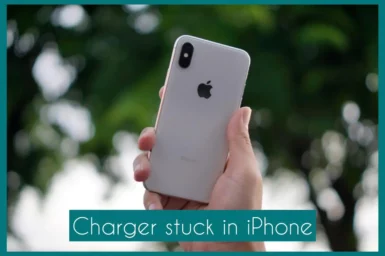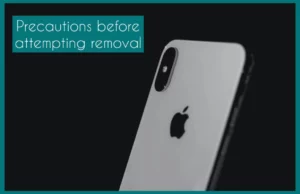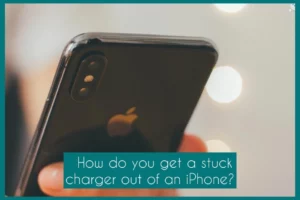Have you ever encountered a frustrating situation with your iPhone where the charger appears to be stuck indefinitely? If yes, you are at the right place. We have got you covered.
This article will examine the frequent problem of chargers getting stuck in iPhones and offer workable alternatives to fix this annoying issue. We have you covered with professional guidance and detailed instructions whether you’re dealing with this problem for the first time or are looking for a quick solution.
Why Does a Charger Get Stuck?
For several reasons, a charger might get stuck in your device. One typical reason is the accumulation of dirt and debris in the charging port over time, which makes it difficult for the charger and iPhone to connect smoothly.
A bent or broken charging cable can also be challenging to install or remove. It’s essential to understand the fundamental causes if you want to maintain your iPhone operating normally and avoid charger-related problems.
Precautions Before Attempting Removal
To prevent further harm, you must take basic steps before attempting to remove a stuck charger from your iPhone.
First, turn off your iPhone to avoid any electrical accidents. Check the charging cable for any obvious bending or damage. If it’s faulty, think about replacing it.
Use a torch or magnifying lens to check the charging port for debris or foreign items in a well-lit environment. Avoid using sharp tools and choose safer cleaning techniques if you find any to prevent harming the port.
How Do You Get a Stuck Charger out Of an iPhone?
It can be tricky to get a stuck charger out of an iPhone. Here are some strategies for safely removing it:
1. Gentle Wiggling
To start, gently move the charger back and forth while pushing a little bit upward. This could help in releasing the link and making removal simpler.
2. Use Gravity
Use gravity by tapping the phone lightly against your hand or a soft surface while holding it with the charging port facing downward. This can clear the connection of any loose debris that may obstruct it.
3. Compressed air
Blow compressed air into the charging port if you think that dust or lint is the root of the problem. Avoid applying too much pressure, as this could force the debris deeper.
4. Wooden toothpick or plastic pry tool
Use a wooden toothpick or a plastic pry tool with caution to remove any debris you can see in the port. To prevent breaking the port or any internal parts, Be careful.
5. Paperclip with Care
A straightened paperclip can be used in some circumstances, but it is riskier and should only be done as a last resort. To prevent scratching or harming the port, ensure it’s smooth and straight and carefully insert it.
6. Apply Heat
A little heat will help the metal components expand, making removing the charger simpler. Aim a hairdryer at the charging port on low heat for about a minute, then try to remove the charger while it’s still warm.
7. Seek Professional Help
If all else fails or you feel uncomfortable attempting any of these solutions, getting help from a qualified technician or an Apple Store is recommended.
Always proceed with extreme care when attempting to remove a charger. Too much force or sharp objects can cause permanent harm, so avoid doing so. It’s usually safer to consult an expert to avoid further damage to your iPhone if none of the approaches work.
How Do You Know if Your Charging Port is Broken?
It’s important for prompt repairs that you can identify a broken charging port on your device. Irregular charging, a charger that doesn’t fit tightly, or a connection that requires wriggling the cable are all warning signs.
In addition, you might see obvious damage, like twisted or corroded pins. It’s probably a port issue if your phone frequently struggles to charge, even with different cables and adapters. To avoid future damage, a professional must evaluate and fix the damage.
Conclusion
In conclusion, a blocked charger might be an annoying problem, but it can be safely fixed with the appropriate safety measures and techniques.
You must handle the device carefully and refrain from applying excessive force. If all else fails, getting expert help is the best way to ensure your iPhone stays in good working condition.



